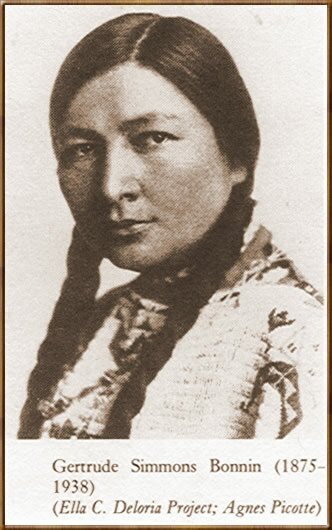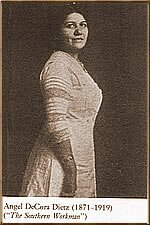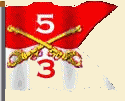


Notice: This is the official website of the All Empires History Community (Reg. 10 Feb 2002)
Native American Women |
Post Reply 
|
Page 12> |
| Author | |
morticia 
Sultan 
Retired AE Editor Joined: 09-Aug-2005 Location: United States Online Status: Offline Posts: 2077 |
 Quote Quote  Reply Reply
 Topic: Native American Women Topic: Native American WomenPosted: 11-May-2006 at 23:53 |
|
Native American women in the military
Little is known about Native American womenĺs contribution to the United States military. There are various foundations presently conducting research on women of earlier eras. Only recently have historians rediscovered and verified actions of ôTyonajanegenö, an Oneida woman, at the battle of Oriskany during the American Revolution (1775-1783) . Tyonajanegen married an American Army officer of Dutch descent and she fought at her husbandĺs side on horseback during the battle. She loaded her husbandĺs gun for him after he was shot in the wrist Better known to most is the story of Sacajewea, who accompanied Lewis and Clark in their expedition during the early 19th century. Sacajewea was a Shoshone woman. She has been remembered as a guide, but, in fact, she served as an interpreter for members of the expedition ,who did not understand the Indian language. She is described as ôBird Womanö in the journals kept by Army Captains Meriwether Lewis and William Clark during said expedition. I'll update this post when I research more. 
Edited by morticia - 16-May-2006 at 18:53 |
|
|
"Morty
Trust in God: She will provide." -- Emmeline Pankhurst |
|
 |
|
Jalisco Lancer 
Sultan 
Retired AE Moderator Joined: 07-Aug-2004 Location: Mexico Online Status: Offline Posts: 2112 |
 Quote Quote  Reply Reply
 Posted: 12-May-2006 at 12:45 Posted: 12-May-2006 at 12:45 |
|
Women were segregated of the militar activities on the mesoamerican societies. With the exception of the Siege of Tenochtittlan and War of the Mixton, were the population took active participation at war. |
|
 |
|
Lord Ranulf 
Consul 
Joined: 28-Mar-2006 Location: United States Online Status: Offline Posts: 309 |
 Quote Quote  Reply Reply
 Posted: 12-May-2006 at 14:07 Posted: 12-May-2006 at 14:07 |
|
Nice touch.........
|
|
 |
|
morticia 
Sultan 
Retired AE Editor Joined: 09-Aug-2005 Location: United States Online Status: Offline Posts: 2077 |
 Quote Quote  Reply Reply
 Posted: 12-May-2006 at 15:29 Posted: 12-May-2006 at 15:29 |
|
Thank you. Unfortunately, there is so little info about Native Americans, in general. I am horrified and ashamed for what the "white man" did to these beautiful and rich cultures.
  
|
|
|
"Morty
Trust in God: She will provide." -- Emmeline Pankhurst |
|
 |
|
Guests 
Guest 
|
 Quote Quote  Reply Reply
 Posted: 14-May-2006 at 07:04 Posted: 14-May-2006 at 07:04 |
|
Occupational hazard when a superior culture meets an inferior one. |
|
 |
|
morticia 
Sultan 
Retired AE Editor Joined: 09-Aug-2005 Location: United States Online Status: Offline Posts: 2077 |
 Quote Quote  Reply Reply
 Posted: 16-May-2006 at 19:10 Posted: 16-May-2006 at 19:10 |
|
Native American Women - How they lived.
A tribeĺs lifestyle influenced the types of dwellings they inhabited. Nomadic tribes that followed migratory prey and the seasonal changes of plant life needed housing structures that were easily erected and dismantled. Agricultural tribes, on the other hand, could enjoy more permanent dwellings, like pueblos The lifestyle of each tribe influenced the types of dwellings they inhabited. Housing structures that were easily erected and dismantled were necessary for those nomadic tribes that followed migratory prey and the seasonal changes of plant life. On the other hand, agricultural tribes could enjoy more permanent dwellings, such as pueblos. 

Native American women were integrally involved in constructing their dwellings. Plains women made, designed and erected their tipis, which were made from canvas, but were originally crafted from buffalo hides. 
Native American women packed and moved camp by using a carrier called a ôtravoisö , which held the long tipi poles and the heavy hide. The women pulled the travois to the new camp. 
When Apache, Paiute and Crow were following the buffalo, they lived under the sun and stars. When said tribes were not ôon the moveö, they would use ôWickiupsö which were structures made from bent tree limbs covered with brush. They were easily erected and dismantled as the tipis. 
This is a photo of a Ute tribe woman erecting her tipi. 
Here are two examples of dwellings called ôpueblosö. Pueblos were compartmentalized complexes. Said pueblos were jointly constructed by men and women. The men raised the structures and the women would apply the adobe surfaces. Once finished, the women were the unit ôownersö. Pueblo men were the primary agriculturists growing the maize (corn), beans and squash, but the women ôownedö the harvest. 
Navajo women, like Pueblo women, jointly with men, constructed their homes, applying mud and brush surfaces to the structures men built. Navajo villages had a head mother in charge and were small camps of related families. Desert Navajo tribes built winter and summer homes called ôhogansö. Summer hogans were open-sided and brush-covered for coolness. Cone-shaped winter hogans had center roof holes for venting fire smoke. Source: http://www.nativeamericans.com/ Edited by morticia - 16-May-2006 at 19:13 |
|
|
"Morty
Trust in God: She will provide." -- Emmeline Pankhurst |
|
 |
|
Guests 
Guest 
|
 Quote Quote  Reply Reply
 Posted: 16-May-2006 at 23:27 Posted: 16-May-2006 at 23:27 |
|
Morticia, a question. From the above it seems some tribes were nomadic and some were not. Which ones were more "settled" so to speak. And how did that effect there culture and survival?
|
|
 |
|
morticia 
Sultan 
Retired AE Editor Joined: 09-Aug-2005 Location: United States Online Status: Offline Posts: 2077 |
 Quote Quote  Reply Reply
 Posted: 17-May-2006 at 11:02 Posted: 17-May-2006 at 11:02 |
Very good question, Sparten! Here's a website that will answer most of your questions regarding different tribes and cultural evolutions. There are also various links available for your perusal! http://en.wikipedia.org/wiki/Tribe |
|
|
"Morty
Trust in God: She will provide." -- Emmeline Pankhurst |
|
 |
|
Guests 
Guest 
|
 Quote Quote  Reply Reply
 Posted: 17-May-2006 at 11:29 Posted: 17-May-2006 at 11:29 |
|
LOL, I was asking about Native American culture in general. Something, I know little about. As for tribes, well I myself am from one, so little to know there.
|
|
 |
|
morticia 
Sultan 
Retired AE Editor Joined: 09-Aug-2005 Location: United States Online Status: Offline Posts: 2077 |
 Quote Quote  Reply Reply
 Posted: 17-May-2006 at 12:18 Posted: 17-May-2006 at 12:18 |
|
Spartan, there were many different Indian cultures. But, let me start from the beginning. Thriving from approx. 800 AD until the European explorers arrived, was the Mississippian Culture, the last pre-historic cultural development in North America. In the north, it spanned from what is now Wisconsin and Minnesota, through Georgia (to the South), and westward into the Great Plains. These tribes were accomplished craftsmen, they had a system of trading and practiced sophisticated religious beliefs. Like most tribes, they were governed by Chief Priests (Chiefs). Studies have shown that these leaders lived on large earthen mounds overlooking central ceremonial plaza areas. The lesser leaders might also live on mounds, but the tallest would be for the Chief Priest. When the Chief Priest died, his temple was destroyed and another layer of earth would be added for his successor. How close his home was to the ceremonial plaza, reflected their social standing. It is still unknown to us what could have induced the Indians to raise such a heap of earth, but it is reasonably supposed that they were to serve some important purpose in those days, as they were public works and would have required the united labour and attention of a whole nation.
Source: http://www.cr.nps.gov/seac/misslate.htm 

A Mississippian carved shell gorget 
Carved marble statues from a Mississippian mound Edited by morticia - 17-May-2006 at 12:19 |
|
|
"Morty
Trust in God: She will provide." -- Emmeline Pankhurst |
|
 |
|
Guests 
Guest 
|
 Quote Quote  Reply Reply
 Posted: 17-May-2006 at 12:33 Posted: 17-May-2006 at 12:33 |
|
Really good. I hope you guys promote this more. facinating culture.
|
|
 |
|
morticia 
Sultan 
Retired AE Editor Joined: 09-Aug-2005 Location: United States Online Status: Offline Posts: 2077 |
 Quote Quote  Reply Reply
 Posted: 18-May-2006 at 23:24 Posted: 18-May-2006 at 23:24 |
|
Native American Women ľ motherhood

The Native Americanĺs primary responsibility was that of raising children. Child raising was an extended family affair, which was helpful to busy mothers. 


Because busy mothers had their children at their side while carrying out their daily chores, children learned and performed the arts of daily living at an early age. 

A wide range of tribes used ôcradleboardsö to carry their babies around. They could be stood up against rocks, attached to saddles and worn on womenĺs back. Cradleboards restrained and protected the child while the woman worked with both hands free. 

Another method of carrying children used by both Plains and Pueblo tribes, was by wrapping children tightly against their back with a blanket. Again, the child is restrained and protected, while the mother has both hands free to work. Source: www.nativeamerican.com Edited by morticia - 18-May-2006 at 23:29 |
|
|
"Morty
Trust in God: She will provide." -- Emmeline Pankhurst |
|
 |
|
morticia 
Sultan 
Retired AE Editor Joined: 09-Aug-2005 Location: United States Online Status: Offline Posts: 2077 |
 Quote Quote  Reply Reply
 Posted: 06-Jun-2006 at 13:02 Posted: 06-Jun-2006 at 13:02 |

Her name was Gertrude Simmons Bonnen. She was known as ôZitkala-saö meaning ôRed Birdö and she was a Yankton Sioux born to father, John Haysting Simmons, and mother, Ellen TateĺIyohiwin (meaning ôReaches for the Windö). She was ôwhite-educatedö and she fought for fair treatment of her people by the federal government. She ultimately founded the Council of American Indians and continued fighting for the rights of Indians until she died in 1938 at age 61. Source: http://www.kstrom.net/isk/stories/authors/bonnin.html |
|
|
"Morty
Trust in God: She will provide." -- Emmeline Pankhurst |
|
 |
|
morticia 
Sultan 
Retired AE Editor Joined: 09-Aug-2005 Location: United States Online Status: Offline Posts: 2077 |
 Quote Quote  Reply Reply
 Posted: 07-Jun-2006 at 14:43 Posted: 07-Jun-2006 at 14:43 |

Her name was Angel DeCora Dietz and she was born in 1871 on the Winnebago reservation in Nebraska. She was influential in shaping Indian affairs (she met with President Theodore Roosevelt to discuss concerns of Native Americans) and art (she became head of the art department of Carlisle Indian School) in the early years of the 20th century. She was an artist and illustrator of books and also spent time lecturing on the problems confronting Native Americans. She died in the great flu epidemic of 1919. Source: http://www.tfaoi.com/aa/4aa/4aa27b.htm |
|
|
"Morty
Trust in God: She will provide." -- Emmeline Pankhurst |
|
 |
|
Guests 
Guest 
|
 Quote Quote  Reply Reply
 Posted: 08-Jun-2006 at 15:41 Posted: 08-Jun-2006 at 15:41 |
|
good site for this thread.an i cant remeber but it may have been posted by someone else.but it's good.
|
|
 |
|
morticia 
Sultan 
Retired AE Editor Joined: 09-Aug-2005 Location: United States Online Status: Offline Posts: 2077 |
 Quote Quote  Reply Reply
 Posted: 10-Jun-2006 at 09:24 Posted: 10-Jun-2006 at 09:24 |
Great site! Thanks Wulfher...all the influential Native American in a nutshell! |
|
|
"Morty
Trust in God: She will provide." -- Emmeline Pankhurst |
|
 |
|
morticia 
Sultan 
Retired AE Editor Joined: 09-Aug-2005 Location: United States Online Status: Offline Posts: 2077 |
 Quote Quote  Reply Reply
 Posted: 22-Jun-2006 at 11:56 Posted: 22-Jun-2006 at 11:56 |
|
Native Americans socially gather by the hundreds and perform dances started centuries ago by their ancestors at events called "Pow Wows". Said Pow Wows evolve to include contemporary aspects and are attended by Natives and non-Natives, whom all join in the dancing while taking the opportunity to meet up with old friends and teaching the traditional ways to the younger generation. Here's a typical regalia worn at Pow Wows: 
Oklahoma style pow wow regalia |
|
|
"Morty
Trust in God: She will provide." -- Emmeline Pankhurst |
|
 |
|
Laine 
Immortal Guard 
Joined: 12-Jul-2006 Location: United States Online Status: Offline Posts: 1 |
 Quote Quote  Reply Reply
 Posted: 16-Jul-2006 at 04:05 Posted: 16-Jul-2006 at 04:05 |
|
Tlingit women were in positions of high authority within their house hold. Indeed heirlooms were passed through the mother's line and she was the stewart of much of these heirlooms.
Generally speaking the line of succesion is much different from other societies. Rather than the successor always being the chiefs son sometimes it was his sister's son that suceeded to the head of the clan.
Tlingit women were also very active in warfare and information rathering during the time when the Russians came into contact with the Tlingit. Many Tlingit women entered Russian society as lovers but also gleened valuable information and indeed it was women from the inside of New Archangel that started the battle by setting fire to some of the structures within the fortified Russian town.
|
|
 |
|
morticia 
Sultan 
Retired AE Editor Joined: 09-Aug-2005 Location: United States Online Status: Offline Posts: 2077 |
 Quote Quote  Reply Reply
 Posted: 18-Jul-2006 at 14:59 Posted: 18-Jul-2006 at 14:59 |
Yes, Laine, this is a very interesting tribe (clan) primarily found in the Alaska region. It is very common for Tlingit women to have tattoos, nose rings, and ankle bracelets. The whole family is involved in finding a mate for one of its members and even after the woman is married off, the family keeps abreast of her welfare. If any harm comes to her or if she is mistreated in any way by her mate, her family would immediately take action against him. The children belong to the mother's clan. The daughters are taught by the mother and the sons by the mother's brother. Very interesting. 
|
|
|
"Morty
Trust in God: She will provide." -- Emmeline Pankhurst |
|
 |
|
Centrix Vigilis 
Emperor 

Joined: 18-Aug-2006 Location: The Llano Online Status: Offline Posts: 7392 |
 Quote Quote  Reply Reply
 Posted: 20-Aug-2006 at 00:44 Posted: 20-Aug-2006 at 00:44 |
|
Sounds similar to the Navaho traditons.
|
|
|
"Absence of evidence is not evidence of absence"
S. T. Friedman Pilger's law: 'If it's been officially denied, then it's probably true' |
|
 |
|
Post Reply 
|
Page 12> |
| Forum Jump | Forum Permissions  You cannot post new topics in this forum You cannot reply to topics in this forum You cannot delete your posts in this forum You cannot edit your posts in this forum You cannot create polls in this forum You cannot vote in polls in this forum |
Bulletin Board Software by Web Wiz Forums® version 9.56a [Free Express Edition]
Copyright ©2001-2009 Web Wiz
This page was generated in 0.137 seconds.
Copyright ©2001-2009 Web Wiz
This page was generated in 0.137 seconds.











 Printable Version
Printable Version Google
Google Delicious
Delicious Digg
Digg StumbleUpon
StumbleUpon Windows Live
Windows Live Yahoo Bookmarks
Yahoo Bookmarks reddit
reddit Facebook
Facebook MySpace
MySpace Newsvine
Newsvine Furl
Furl Topic Options
Topic Options